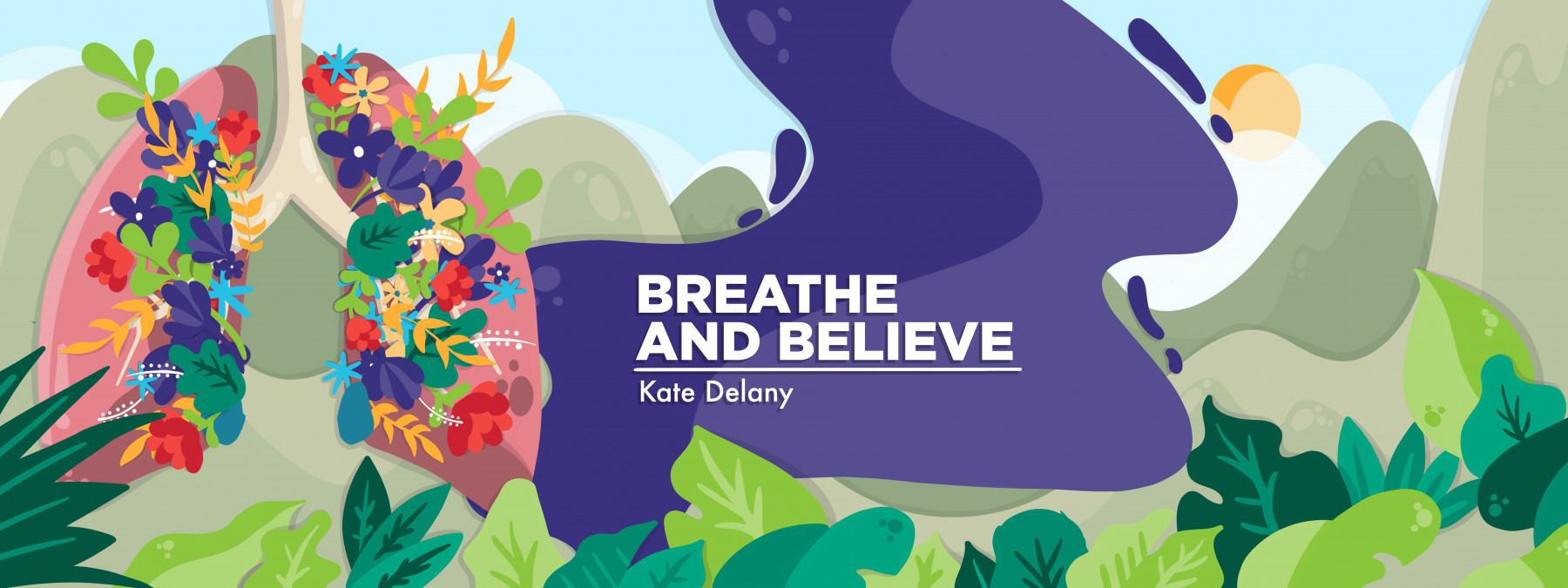Breathing New Life Into a Familiar Topic: A Review of Michael Stephen’s ‘Breath Taking’

Having a chronic illness, or caring for someone who does, means spending a lot of time thinking about an organ or body system, usually in a very specific way.
I’ve spent a lot of time thinking about the lungs of my younger sister, Mary, who has CF. I’ve stressed over pulmonary function test scores. I’ve piped icing in the shape of lungs onto cakes to celebrate lung-versaries (transplant anniversaries).
But reading “Breath Taking: The Power, Fragility, and Future of Our Extraordinary Lungs” by Mary’s former physician, Dr. Michael Stephen, made me think about CF lungs and my own lungs in a far more expansive and even metaphysical way. Dr. Stephen’s book pans out to both historical and spiritual concerns related to the lungs while also zeroing in on particular scientific stories and the lives of the affected individuals.
The lungs: an overlooked repository of the self?
In the prologue and opening chapter of “Breath Taking,” Stephen makes a compelling case for greater focus on the lungs, noting that, “In addition to being the central organ at both birth and death, they are also the body part we must accommodate in the future if we are going to colonize other planets, or even stay alive on this one.”
Though we may think of our essential core as being rooted in our brains or our hearts, Stephen notes that for Hippocrates and the ancient Greeks, the inhalation of air connected one to vital spirit, to the life force in the universe.
He also references the Buddhist focus on attaining enlightenment via studied use of one’s lungs. Stephen regales readers with some of the amazing accomplishments of Tibetan monks who, while practicing g-tummo meditation, or “vase breathing,” are able to withstand freezing cold temperatures because of their concentrated fire breath.
He also examines the success rates of treating depression and asthma via yoga breathing practices.
Promise and peril through the ages
Naturally, as a physician, Stephen has accounts of respiratory ailments to share. In doing so, he zigzags across centuries and continents, detailing Marcel Proust’s acute suffering from asthma and the way Lord Byron and other Romantic authors wasted away from tuberculosis. He talks about treating those poisoned by the air around them, recounting the suffering of a young girl in Cape Town as well as a 9/11 first responder’s fight with idiopathic pulmonary fibrosis that eventually claimed his life.
In discussing cancer, lung transplant, and even the narrow bands of vocal cords that give us a voice, Stephen highlights both the strength and vulnerability of the body. He looks at the ways naturally occurring substances have marred human health, both through addiction as well as unwitting exposure.
He examines the historical forces that propelled tobacco from being “a gesture of good will at the end of bartering to seal a transaction” in Native American civilizations to a product whose smoke now contains about 7,000 ingredients, including nicotine.
He delves into the long history of human use of asbestos, “a beautiful fiber … found in nature in stunning colors of bright white, emerald green, iridescent blue, and light brown,” which can cause lung cancer, pulmonary fibrosis, and mesothelioma.
Through all these discussions of disease, Stephen highlights the medical advances to diagnose and treat them.
Early CF diagnosis and advocacy
In picking up “Breath Taking,” I didn’t expect to learn anything new about the history of cystic fibrosis, but in the final section titled “Cystic Fibrosis, the Most Heartbreaking Lung Disease,” I did just that.
I didn’t realize that the condition we now know as cystic fibrosis dates back centuries, to medieval times, or that the first autopsy on a CF patient was performed in 1595, revealing pancreatic abnormalities. The term cystic fibrosis was first used in 1936, Stephen notes, “referring not to anything in the lungs but to the pathological state of the pancreas.” Scientists didn’t focus on the lungs until years later, after pancreatic enzyme deficiency began to be productively addressed.
I also learned about the inspiring grassroots origin of the Cystic Fibrosis Foundation, formed in 1955 by Milton and Evelyn Graub, whose two children were diagnosed with CF, a disease few people had ever heard of then. This organization grew from a parent-powered advocacy group to an influential national foundation that now sponsors more then 130 CF care centers.
My sister left Stephen’s care abruptly when she had to be transferred to a new hospital to undergo a double-lung transplant. However, the voice in “Breath Taking” matches the tone of the doctor who saw my family through some of our darkest CF days — compassionate and knowledgeable — combining treatment of a disease with empathy for those impacted by it.
***
Note: Cystic Fibrosis News Today is strictly a news and information website about the disease. It does not provide medical advice, diagnosis, or treatment. This content is not intended to be a substitute for professional medical advice, diagnosis, or treatment. Always seek the advice of your physician or other qualified health provider with any questions you may have regarding a medical condition. Never disregard professional medical advice or delay in seeking it because of something you have read on this website. The opinions expressed in this column are not those of Cystic Fibrosis News Today, or its parent company, Bionews, and are intended to spark discussion about issues pertaining to cystic fibrosis.










Leave a comment
Fill in the required fields to post. Your email address will not be published.